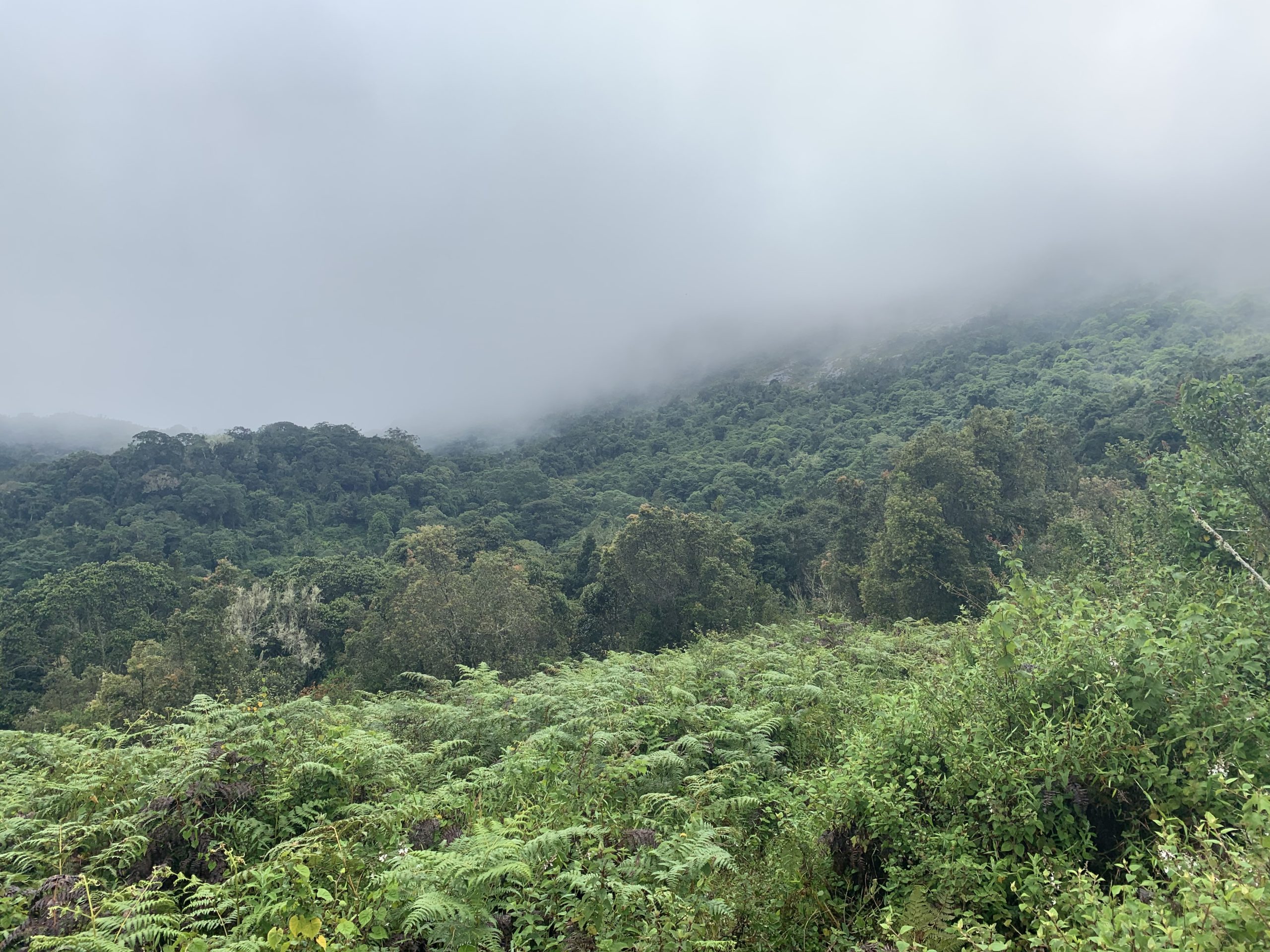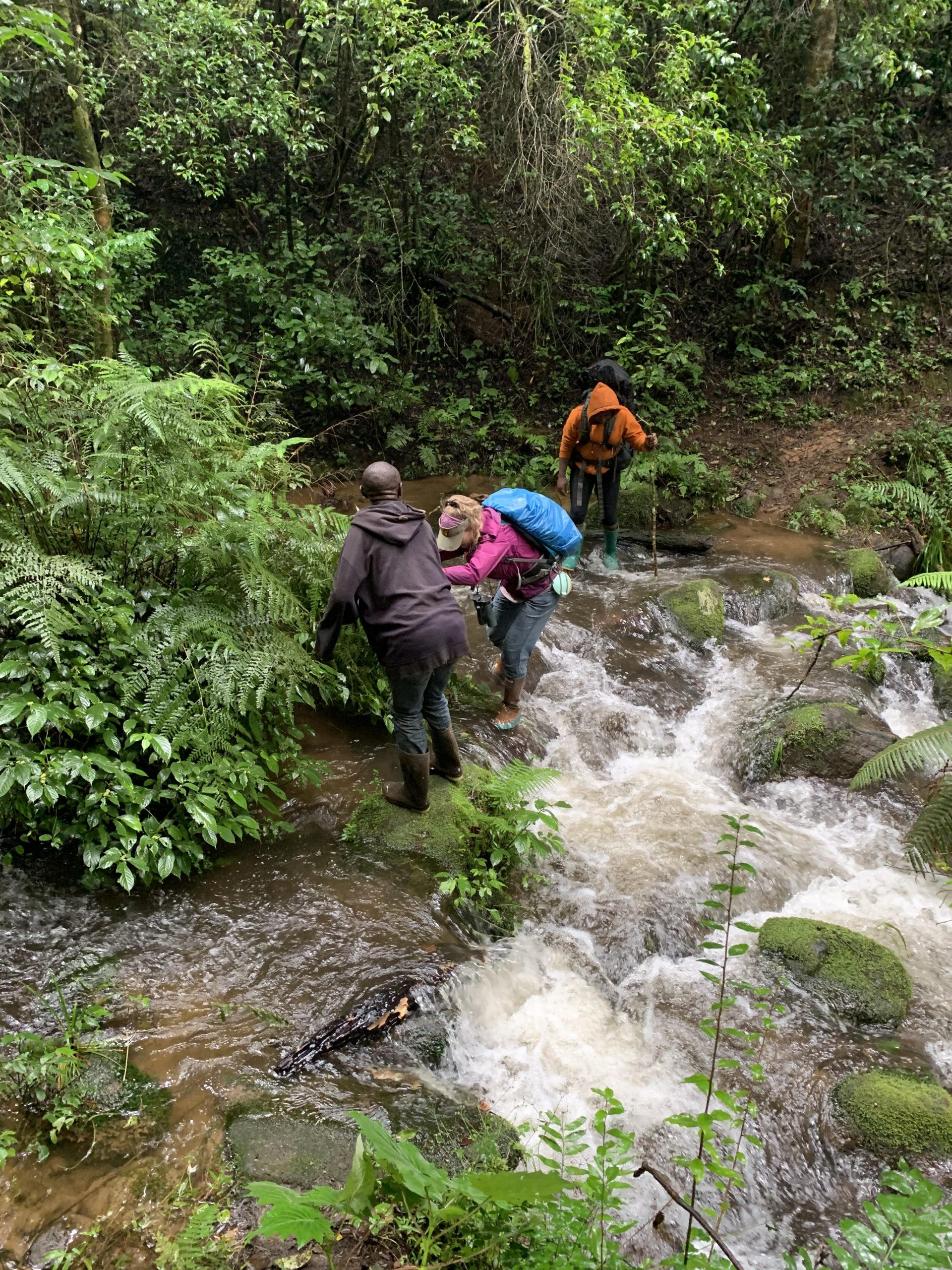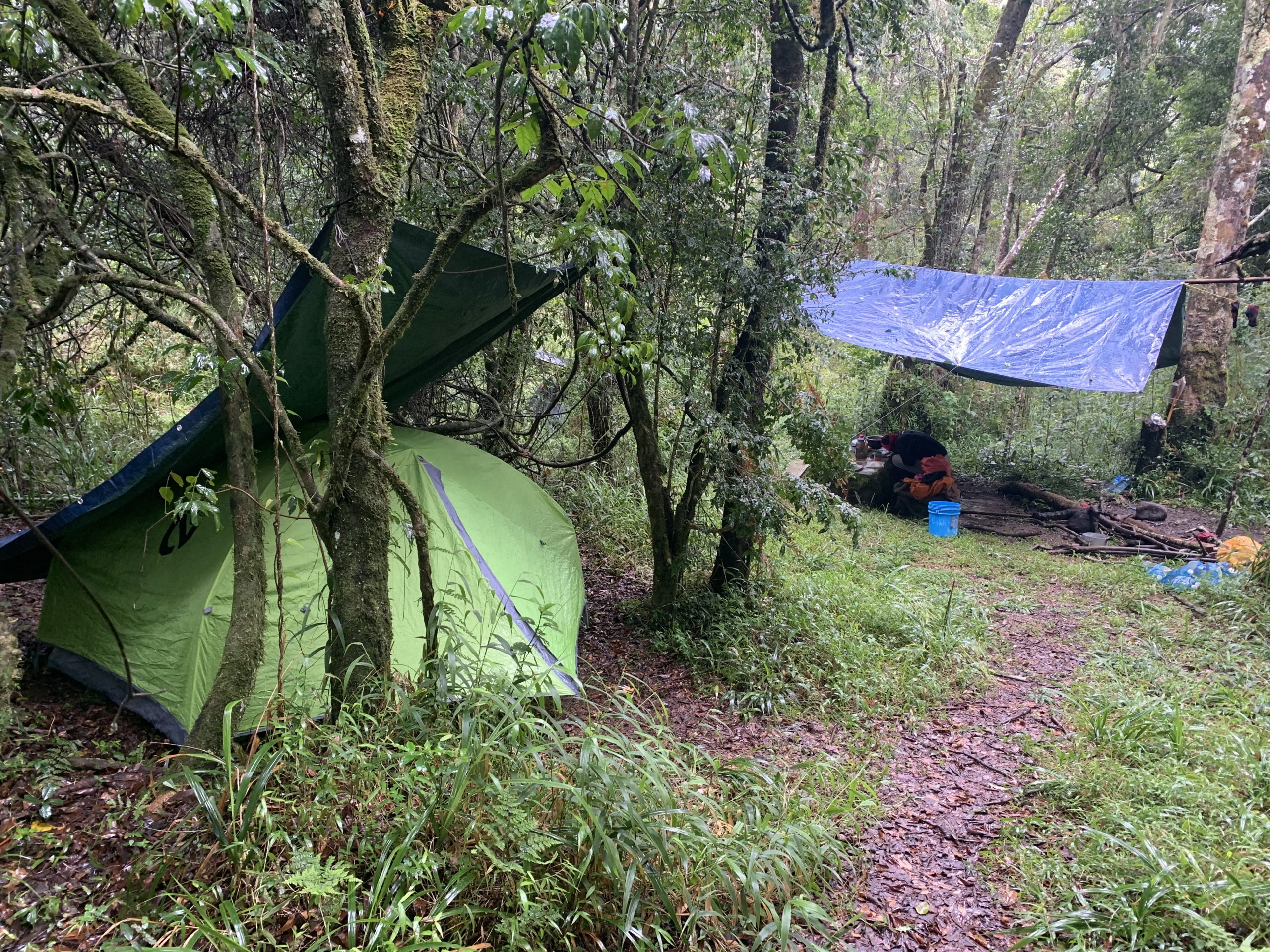We came to Tanzania on a mission to see all of the country’s endemics, and in order to see all of the country’s endemics, multiple hiking expeditions though the Eastern Arc Mountains are necessary. Our next mission, Udzungwa Forest-partridge, endemic and restricted to the Udzungwa mountains. It’s a 4-6 hour hike to the location and requires bringing along porters for gear and camping in the forest with no access to amenities. Big name tour companies like BirdQuest and Rockjumper, run an Udzungwa extension, but it’s going to cost a pretty penny, somewhere in the range of 2,000USD. Yes, $2,000 (just for the Udzungwa Forest Partridge part). We wanted to do it in true Budgetbirders style so we showed up in the town of Udekwa to coordinate it all ourselves without having a “fixer”.
Most tour groups come during the dry season, when the roads to these remote towns are more easily passable and there is less worry of being completely rained out of birding. We were here in April, the rainiest month of the year, but we seemed to get very lucky as on our drive in, it was sunny with bright blue skies and the road was completely dry. Had it been wet, I’m not sure we would have been able to turn up at the office so easily because the road had several very precarious sections. We also knew getting out could become challenging, if not impossible with heavy rainfall and tried to pay close attention to the sections that would be most difficult to navigate.
It was a clear day when we turned up, but no one was at the office, save for two women who informed us the people from the office had gone back to town and would not be returning until at least the following day. They were very friendly and proved helpful, although it was slow going because we spoke no Swahili and they spoke very little English. Seriously, thank God for Google translate. One of the ladies called another man, Isaya, who must have accompanied the tour groups in the past and was familiar with the trails. He agreed to join us as a porter. We only needed to find one more. Every time we thought they might call someone else, one of the ladies, Paulina, volunteered to be the second porter. At first I thought she was joking because I’ve never heard of a woman joining on a rough trip such as the one we were planning, but it turns out she was serious. An able body is an able body, so we agreed. It took us nearly 4 hours to coordinate everything, but after signing the register book, we set off to the entrance of the national park while the skies remained clear and the road to get there still passable. We camped in our rooftop tent outside of the rangers station and set off at 6am the following morning.







If you subscribe to the notion that women are not just as capable as men, I believe you are wrong. Especially when it comes to African women, whose sheer strength, endurance, and perseverance put myself, and many of my “first-world” colleagues to shame. These are women with survival capabilities far beyond my own. Although, with that being said, Paulina was without a doubt the slowest among the four of us, and what should have been a 4-5 hour hike turned into a six and a half hour slog. Isaya was helpful and often would run ahead, drop his bag, and then go back to help Paulina carry hers, but the fact that he was born with only one hand (or lost it — I didn’t ask) meant he had a few limitations. It was long and somewhat challenging at times, but it certainly was a beautiful hike in. The weather was cool but clear, which made the climb easier. I don’t want to think about what it would have been like to hike up had it rained…
Eventually we arrived at Luhala camp and set up our meager shelters. It’s close to 2,000m elevation so even during the day it can be quite chilly. After eating some white rice, Ross and I set off to see if we could track down an Udzungwa Forest-partridge, as we had a few hours to spare before dark and the skies remained clear. We sat down in the bamboo and not 5 minutes later had two Udzungwa Forest-partridges came rushing in. They hung around providing excellent views. In the distance we could hear others calling. And then we walked further up the trail only to have four more come walking by. It seemed that every time we stopped we had more partridges! In just our first afternoon we had seen EIGHT and heard at least several more! I don’t think everyone has this experience!
We capped off the evening with point blank views of an African Grass Owl that flew directly over our heads as we stood on the banks of a grassy clearing. Had we known the owl would come so close we certainly would have attempted a photo!

I don’t mean to brag but… 
The best photo of Udzungwa Forest-partridge there is!
That evening we crawled into our tents exhausted after walking over 9 miles through steep and overgrown terrain. And then the rains came. It was a cold night of sleep followed by a cold morning and the rain didn’t let up until well after 2pm. And when it let up, it was only for 2 hours. The rest of our time in the mountains was rain, fog-rain, mist, or some combination of the three! We often succumbed to huddling under the tarp attempting to keep dry. Unfortunately we had no reprieve beside a fire because all wood was too saturated to make any kind of warmth. Despite these conditions, we attempted to bird as much as possible seeing birds such as Moreau’s Sunbird, Red-faced Crimsonwing, Scaly Francolin, Yellow-throated Mountain Greenbul, and Sharpe’s Akalat, but the majority of Ross’s attention went to locating a Kipenjere’s Seedeater. There couldn’t be a more boring bird to spend hours obsessing over and searching for than Kipenjere’s Seedeater. As a Tanzanian endemic, it was our next biggest target, but the rain made it extremely difficult and we never did find one.
Ultimately we had to settle with less than stellar weather to breakdown camp and move locations. We packed up our gear from Luhala camp and moved to Sikini camp. Finally got to experience what that hike out in the rain would be like! At least moving down the mountain a bit meant we were three hours closer to town and the following day we didn’t have quite as far to go to get back!

Dinners of rice and beans 
So much sign that elephants roam this forest! 
huddled under the tarp to avoid the rain at Luhala Camp 
Didn’t realize we were standing next to an active hyena den at dusk! 
Sikini Camp 
At least there’s kind of a real shelter
In the end, we paid $220 USD for our experience, a fraction of the cost of a tour. We have to thank Hervé and Noëlle Jacobs, whose trip report and GPS coordinates were infinitely valuable, and without which none of this would have been possible. For anyone reading this who is actually thinking of going, and doesn’t want to spend the time (4 hours) and hassle of showing up announced and coordinating it yourself, there is one local guide, Elias, who can be contacted to set up the four day trek, and he charges ~$1,000USD. (We knew we could do it ourselves so we opted to save a few $$$. Besides, that’s quite a hefty price when you consider local standards and the fact that Elias keeps the majority of the money. But he cares about the forest and it is a good idea to support local ecotourism so this is definitely a good option.)

FYI: This birding occurred April 15-19, 2021

Always a pleasure to read your adventures. I am happy you were successful with the forest partridge. Making the organisation of a forest trek in few hours seems impossible and usually it is not. It reminds me a trek in Principe island.
Looking forwards your next adventure
Good write up!